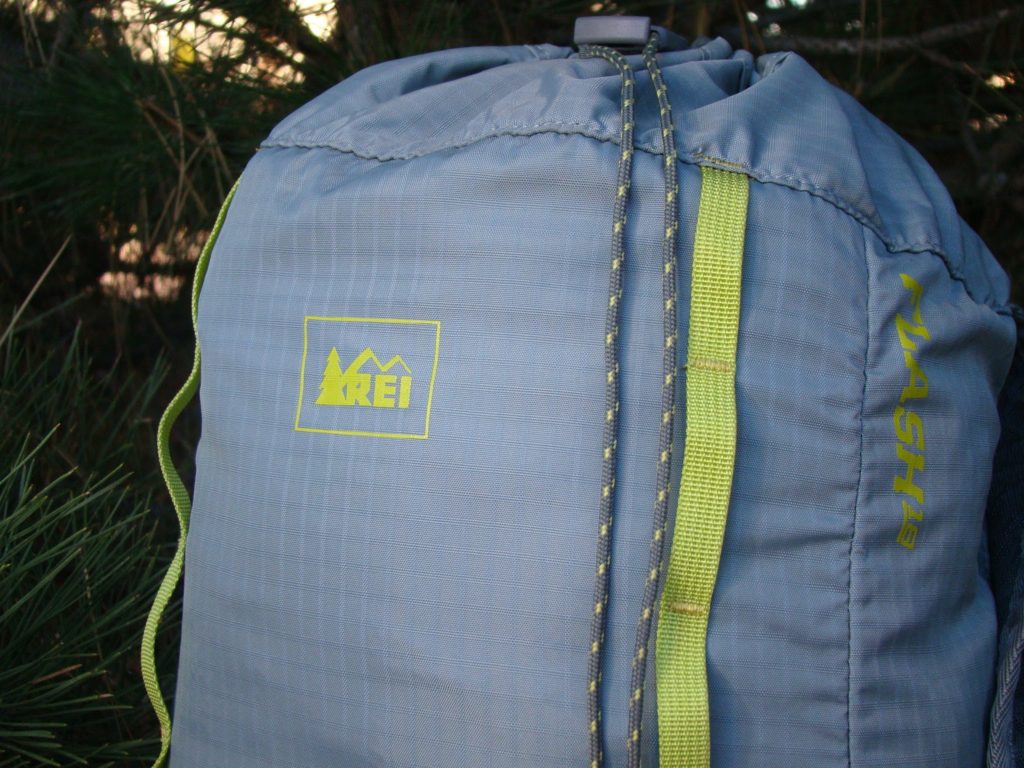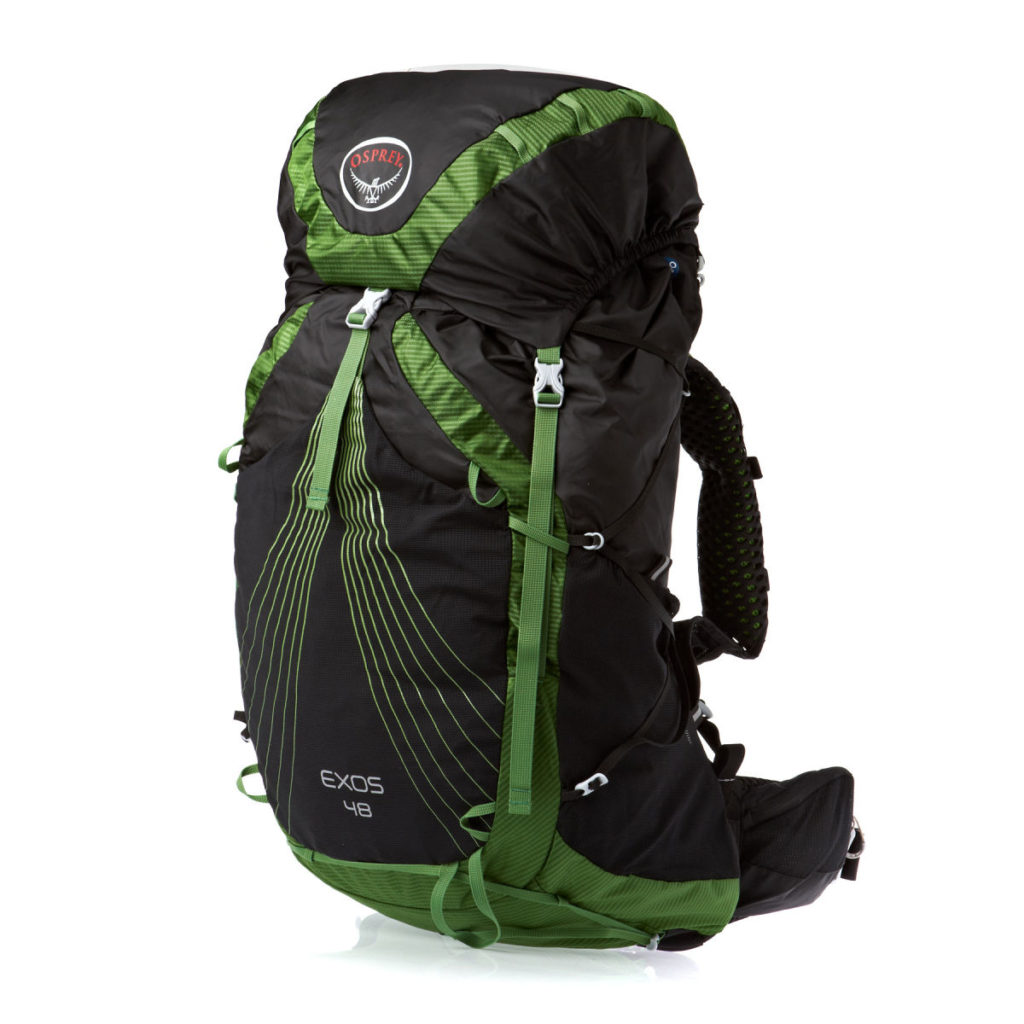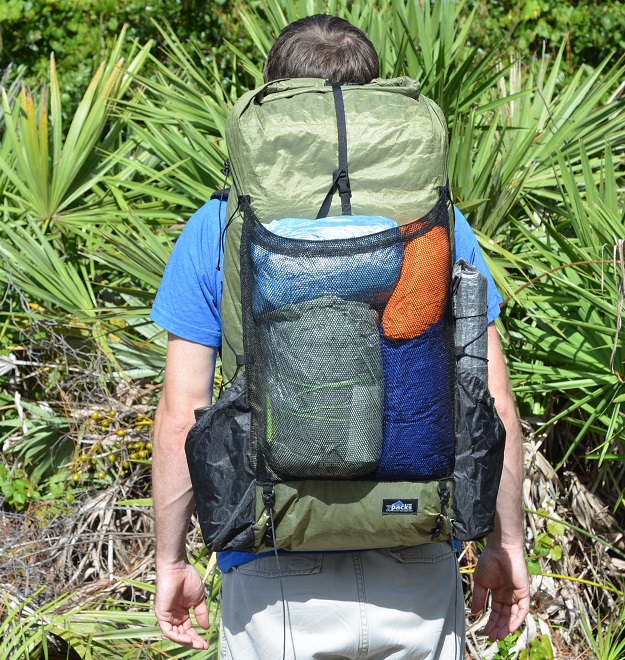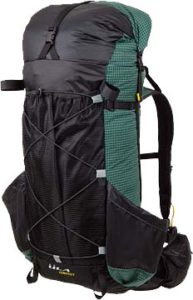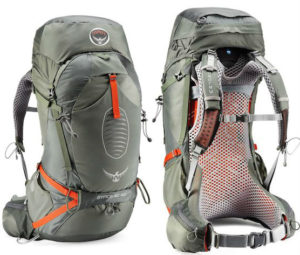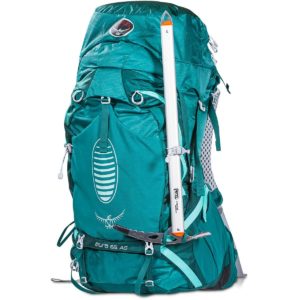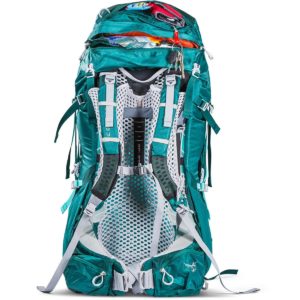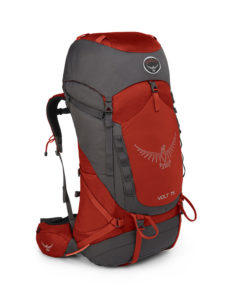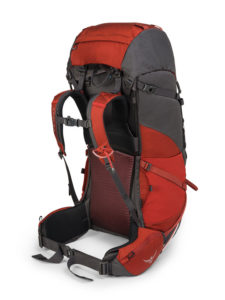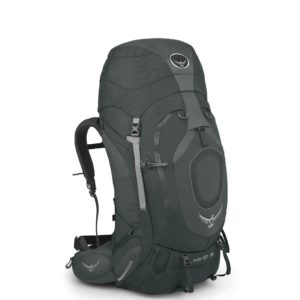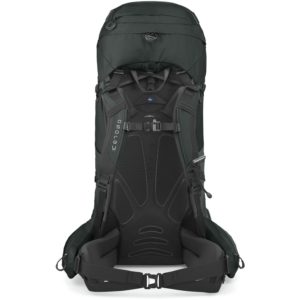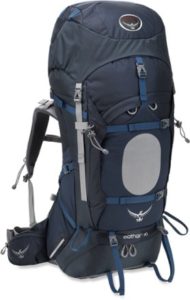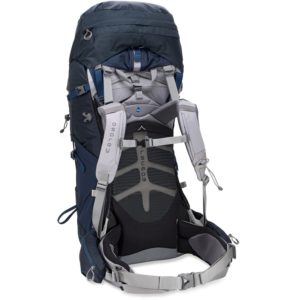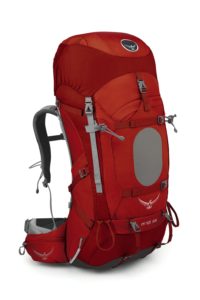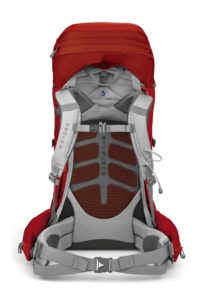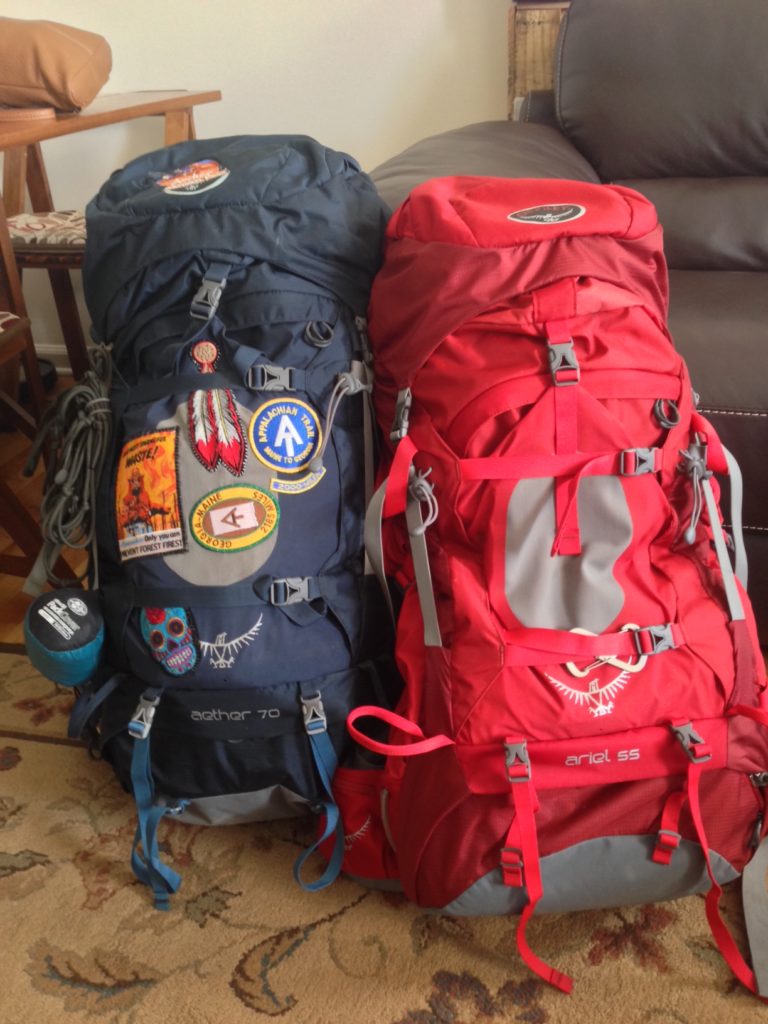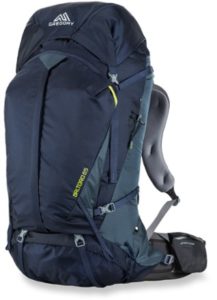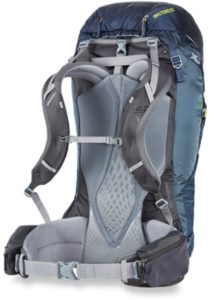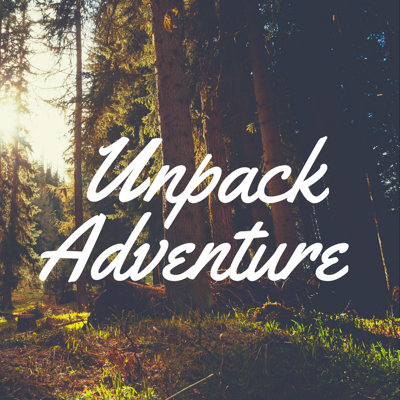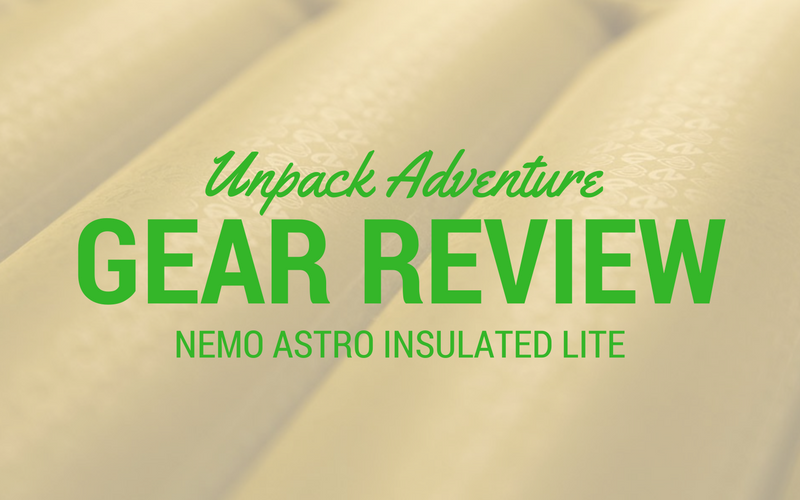Essential Hiking Gear Guide: Backpacks
A backpack is the quintessential piece of hiking gear
When I was thinking about where to start with the essential hiking gear guide, I felt the most important piece of one’s hiking kit is the backpack itself. A hiking backpack won’t save your life in a dire emergency like a sleeping bag or emergency blanket can but it surely can carry those valuable items and many more. Having the right backpack can make or break your next hike. When you have the wrong backpack your shoulders, neck and back will all ache and potentially rub because of either the improper fit, or overall design of the pack. The right backpack will make your hike a much more enjoyable, comfortable and fulsome experience.
If you don’t have any prior experience with a specific backpack company, I recommend spending some time looking on other hiking blogs that I feel are very good and informative. Some blogs that I highly recommended are Section Hiker, Clever Hiker and Atlanta Trails. Also, websites and stores like REI, EMS and other outdoor outfitters are a great resource of information to get an idea of the backpacks within your price range and the brands out there. From these sites, stores, and blogs, try to gather information from contributor’s reviews and personal recommendations. All of those sources can be a vital source of insights, both good and bad, about specific backpacks. One of the biggest concerns here is the overall fit of the backpack, I highly recommend going to your local outfitting store who sells a wide variety of backpack brands and speak to them about your intentions and wants from a hiking backpack.
The aim of this Essential Hiking Gear Guide – backpack article is to give you some information and thoughts on the different backpack segments to help you decide which backpack is the right one for you. I will also give some of my personal recommendations on specific backpacks or brands for each pack segment. The recommendations given are based on my own experiences and research but also thoughts and opinions from my friends or other hikers I know and have encountered along the trail. As mentioned earlier, I also highly recommend leveraging sites like REI for user reviews or gear specific review sites like Outdoor Gear Lab (which I use almost every time I am looking at new gear). I am writing this article under the pretense that you have some understanding and familiarity with common hiking backpacks, their components and design features.
When looking at backpacks, the different sizes will be determined off of two measurements, the length of your torso (from the back of your neck down your spine to the top of your hips) and then slightly less important but still necessary is your hip belt length (visit REI’s Finding Your Torso and Hip Size for more information and instruction). Different manufacturers will have slightly different measurements; so make sure to check each individual brand’s size guide before making a purchase. One really important thing to remember is that some backpacks will have a fixed torso length and hip sizes for each size. Which means a small backpack will come with small hip belt and also the torso length is will small. If the backpack has fixed sizes as discussed, check to make sure you fit within the range for both torso and hip lengths before buying. A lot of the ultra/lightweight backpacks will have fixed sizes and not have the same interchangeability as some of the “backpacking” backpacks.
A rough guide to the number of hiking days, a backpack’s capacity and weight can be found below. Note this guide is for spring through fall hiking as winter trips typically require a larger backpack because of the extra gear / clothing.
| Day or Overnight | Weekend | Multiday | Extended Trip | |
|---|---|---|---|---|
| Nights | 1 - 2 days | 2 - 3 days | 2 - 5 days | 5+ days |
| Liters | 20 - 50L | 50 - 60L | 60 - 80L | 80+L |
| Empty Pack Weight | 1.5 - 4.5lbs | 2.5 - 5lbs | 2.5 - 5+lbs | 4 - 6+lbs |
When thinking about what you want or need in a hiking backpack, I suggest referencing the four questions posed in the Essential Hiking Gear Guide intro post. Those basic questions will help you understand what you want or need for any new piece of hiking gear, especially a hiking backpack. To start, what type of hikes are you planning on doing?
This question is vital to choosing the right backpack that fits both your needs and wants from a pack.
Daypack:
A daypack, which will be smaller capacity backpack, will be great for a jaunt into the woods for a quick hike and lunch or it could also be utilized for a minimalist’s overnight; possibilities are only limited by the focus of your excursion. There are many other uses for a daypack besides shorter hikes. They can be utilized commuting around town on a bike, motorcycle or skateboard. I personally utilize one of my two daypacks every week for going to the park with my dog after work or on Saturday with a blanket, lunch, hammock (I explore the versatility of hammocks in the second article of this Essential Hiking Gear Guide here) and water for nice picnic and relaxing day, wherever you choose to set up. To me, resourcefulness is key in hiking gear, as it is in all self-reliance situations, which can quickly arise from any hiking or outdoor adventures. I think buying something that has or can have multiple uses is key when making a major purchase. Typically a backpack will have one main use, to be a pack. I feel however that multiple uses and applications of the same backpack or daypack makes them more efficient and overall more effective as a piece of your hiking kit. Akin to a school backpack but more purposeful and geared towards hiking or other adventures, these day packs will be the lightest, smallest and maybe the most versatile backpacks one can buy (most versatile in the terms of being able to be utilized in one’s daily life beyond a pure hiking backpack). To my understanding, all daypacks are unisex so the below backpacks could work for anyone.
Unpack Adventure’s daypack recommendations:
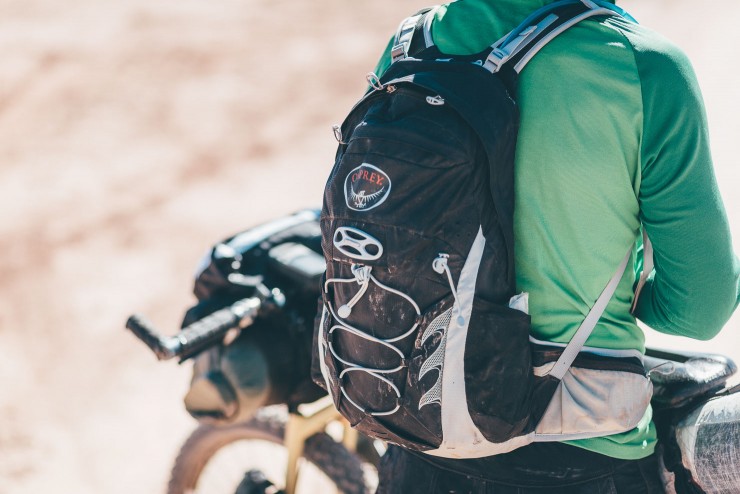
Like all Osprey backpacks, this backpack is designed and built for functionality, durability and comfort. It also comes with their all mighty guarantee (with no questions asked, Osprey will repair any damage or defect for any reason free of charge – whether it was purchased in 1974 or yesterday). Some stand out features of the Talon series backpacks are that they are fully adjustable (which is not common on most smaller capacity day packs), the smaller capacity packs also incorporate a lot of the features their larger bags have such as external tool attachments, mesh hip belts with pockets, ventilated back, separate water bladder compartment and these packs overall function very well in a variety of uses. The Talon comes in a variety of sizes (6, 11, 18, 22, 33, & 44 liters) with the most versatile, and less cumbersome, daypack sizes being in the range of 18-33L; with 22L the sweet spot and will run you around $75-100 depending on where you buy. You can pick up the backpack from Amazon for $80+ depending on size and color.
Osprey Website – Talon & Tempest Backpacks
Outdoor Gear Lab Osprey Talon 22L Review
For the money, the REI Flash 18 and 22 daypacks are unbeatable at $40 and $50 respectively. Obviously you do not get all the bells and whistles or comfort and durability of the bigger name packs from Osprey, Gregory or Deuter, but for a daypack where you could just be carrying water and a couple of gear items, I really like the price point of these packs. These are top-loading backpacks only but I do not see that as a huge draw back being on a day hike, you won’t really be carrying a crazy amount of stuff.
REI Website – Flash Series Backpacks
Outdoor Gear Lab REI Flash 18L Review
I currently have two daypacks, one Camelbak Cloud Walker and a Columbia (which was a gift). I plan to upgrade in the coming months and picking up the Osprey Talon 22L for day hikes, short outdoor excursions, various life needs but also for mountain biking / biking adventures because the Talon has Osprey’s LidLock™ helmet attachment system; pretty cool and unique feature.
Moving on to the world of larger capacity, day to multi-day duration hiking backpacks, the world of possibilities is near limitless. These backpacks will range from most ultralight ones from ULA, Zpacks all the way to big mountaineering 80+ liter beasts of backpacks. When first taking the steps into hiking, I would highly recommend asking a friend or family who hikes or has hiked if they have any backpacks you can try. The reason why I believe this is a smart idea to start off with is because before you take the plunge and invest a high quality pack, you must know if you truly enjoy hiking itself, along with the pain and pleasure it can bring. For me, hiking and backpacking are escapes that I instantly wanted to make a long term, incorporated aspect of my life.
Let’s say you were able to borrow a backpack from a friend or family member (remember this pack will most likely not be suited perfectly to your exact body) and have caught the hiking bug, now on to the fun part, what backpack will you decide on. Again another question posed in the prior post comes to mind, do you consider yourself a lightweight minimalist? Or do you plan to load up and carry a decent amount of weight? Those questions are vital to picking a backpack that suits both you and your body type but also your hiking / backpacking ambitions.
Ultralight/Lightweight Backpack:
If you plan to go the ultralight or lightweight backpack route, there are many great options for you to choose from. Companies such as ULA, Gossamer Gear and Zpacks who specialize in ultra/lightweight gear and backpacks or all the way to the mainstream backpack dedicated companies such as Osprey and Gregory, they all have backpacks that cater to the minimalist. A lightweight backpack can be the perfect companion on a hike but with the weight savings comes some limitations that one should definitely fully consider. An ultra or lightweight backpack could have a potentially compressible suspension backing system, minimal or no metal framing to provide structural support, limited padding on the hip belts and shoulder straps, etc. Which all are great aspects of the lightweight design but do have limitations, especially weight limitations that must not be overlooked. From my personal experience, I started out my 2014 Appalachian Trail thru-hike using an Osprey Atmos 65, a lighter weight backpack but by no means an ultralight one. But due to my choice of doing mail drops for food resupply and less mail drops than normal (i.e. heavier drops), I was overweighting the bag and the ventilated suspension backing system. The pack started to really irritate my back as it would compress and hit my lower back with every step; not a design issue at all but improper adherence to the weight limits by me (more on that story and Osprey forever gained my loyalty in later posts). Overall, the backpacks and brands on the market today within the ultra/lightweight categories are stellar but each will range in balancing the weight reduction to comfort and payload scale. My last word of advice is if you do decide on an ultra or lightweight backpack, adhere to the manufacturer’s guidance and you will have amazing, swift and agile hikes in your future. Being an ultra / lightweight hiker or a minimalist is more of a lifestyle than it is a mere coincidence. It takes time, effort, planning and sometimes money to achieve the sub 10 lbs. base weights of someone like the ‘triple, triple crowner’ Clint Boggart aka “Lint”; you can read up and see Lint’s current hiking gear rundown here. When you cold soak your food, or plan on picking up food every 2-3 days as Joey Camps aka Flash did on his unsupported Appalachian Trail speed hike record attempt, an ultralight backpack can work for you. I am none of those things and my base weight leaving Springer was near 20 lbs. (which obviously was able to whittled down some as I refined my hiking needs / wants over the course of the trail). Most ultralight / lightweight backpacks are unisex but some manufacturers like ULA give the option of choosing “S” shoulder straps which are geared to fit most women hikers better than the traditional “J” style straps.
Unpack Adventure’s ultralight/lightweight backpack recommendations:
Made by Osprey, this is yet another good example of a backpack which will deliver if you use it ‘responsibly’. This bag can handle 20-30lbs load really well (mainly because of the ‘turtle shell’ tensioned frame) but given that it is heavier than most ultralight backpacks, you would hope the extra weight would allow you more freedom in terms of your load capacity. If you do not intend to carry near lightweight capacities, then this backpack may not be your best option. Or if you intend to carry this pack for a thru-hike with a lot of non-ultra/lightweight, this backpack is also not for you. Two 2014 Appalachian Trail thru-hikers I hiked with a ton, Pocket and Aquaman, both started off with Osprey Exos backpacks but only one finished with theirs. Due to the strain on her shoulders and back, Pockets change to a Granite Gear backpack at the first outfitter on the trail, Mountain Crossings at Neel Gap. Aquaman adhered to the weight balancing and completed his thru-hike with no problems whatsoever. Definitely a great lightweight backpack for longer duration hikes. Depending on the size, the Exos backpack will run around $150-190 for the $48L version from Amazon.
Osprey Website – Exos Backpacks
Outdoor Gear Lab Osprey Exos 48L Review
As with everything ZPacks makes, these packs are geared towards the ultralight and lightweight hikers out there. Every ZPacks product is made with the lightest weight materials possible and designed to provide great overall functionality. The company’s founder and employees create products that they would want to use (and they actually do test and a regular basis). All ZPacks backpacks utilize Cuben Fiber for maximum strength and yet a very lightweight pack construction. With the Arc Blast, ZPacks combined the benefits and strength of Cuben Fiber with their ultralight Flexed Arc frame to create a very lightweight pack (45L is 20.8oz and 55L is 21oz) than can carry up to 30lbs and allow you to multi day hikes. During my Appalachian Trail thru-hike, I met probably four or five people who used this backpack and they all raved about it. The pack has a top loading roll closure, large external mesh pocket with two side pockets that are big enough to hold 1-1.5 liters of water and extra gear. The Arc Blast is definitely one of the top picks for any ultra/lightweight hiker embarking on a multi-day or thru-hike.
Outdoor Gear Lab Zpacks™ Arc Blast 52L Review
Ultralight Adventure Equipment or “ULA” backpacks are probably the most common ones I came across during my Appalachian Trail thru-hike. I have never had the change to wear or test any of the bags but by the sheer number of hikers that I have been use them, they must be very quality built lightweight backpacks. I hope one day in the future I will have the chance to review a ULA backpack and then I will be able to update this post with some credible feedback or comments. The Circuit weighs less than 41 ounces and can carry loads up to a recommended 35lbs. The backpack is top loading with a large external mesh stash pocket and two large side pockets big enough for a 1L Nalgene and some tent poles. The frame of ULA backpacks are made from carbon fiber and although I have no direct experience, from reading Outdoor Gear Lab’s review of the ULA Ohm backpack, the poles could be more fragile than originally expected. Outdoor Gear Lab compared the ULA Ohm directly with the Gossamer Gear Gorilla and from their review, the Gossamer Gorilla prevailed. Despite that, I have come across some many ULA backpacks that I felt inclined to include the Circuit in this article.
ULA website – Circuit
“Backpacking” Backpack:
Ok, so if you’re not an ultra/lightweight hiker, then you will be interested in the category I will call “backpacking” backpacks. I personally am not a lightweight minimalist most of the time and actually take pride in the fact that I can carry a heavier load (when needed) and keep up my consistent hiking pace; in relative comfort. Backpacking backpacks will differ from brand to brand and come with different features but overall these backpacks are geared more to multi-day and longer hikes. There are some basic features you should expect from these packs like a separate sleeping bag compartment, which is helpful to access you bag/pad and or other gear from the bottom of the pack. External sleeping pad straps, more than one hip belt pockets, multiple tool attachment points such as ice axe loops on the mountaineering packs. Typically these bags will have larger top lids that will have storage for key essentials and some can be removed if you don’t need that extra storage. Some top lids also come with a hip belt strap attached so it can be used for quick blue blaze hikes or a messenger style satchel; however I have never used that feature of my backpacks. Some packs have dedicated water bladder pouches but I personally think that feature is not a good use of your vital storage space. When trying to narrow down this very expansive and diverse backpack segment, you should think about what types of hikes you plan to do, the duration of those hikes, your preference for comfort, if you intend to carry heavier loads, all of those questions will help narrow down your search based on reviews and recommendations.
In my eyes, some of the better backpacks you can start off with are from REI. A couple of my hiking buddies have REI packs such as the REI Traverse. From my buddies’ experience, they feel the Traverse line of packs are very good for the money because they are pretty comfortable and have the features like interchangeable hip belts, 11 exterior pockets, removable top lid, etc. I personally started my hiking experiences with two Teton backpacks, the Sports Explorer 4000 and Sports Outfitter 4600. They are cheaper packs but help you get the understanding of what you want and need from a pack. I picked up both of my Teton backpacks from Amazon because it is so convenient with Prime shipping the backpacks came in two days. The Teton backpacks are probably the cheapest entry point into multi-day hiking packs but from my experience (and now using Osprey backpacks) the Teton backpacks lack in overall fit, comfort and abilities. For the money, features and quality, I think REI backpacks are very good starting point for multi-day packs but there are better packs out there.
Once you want to invest some serious money in a high quality, longer term backpack which will fit your body type and is geared toward your hiking interests, major brands like Osprey, Gregory, Arc’Teryx and Deuter will come into play. I personally have had exceptional experiences with Osprey backpacks. During my Appalachian Trail thru-hike, I was carrying more weight than the Atmos 65 could handle it was seriously bothering my back.
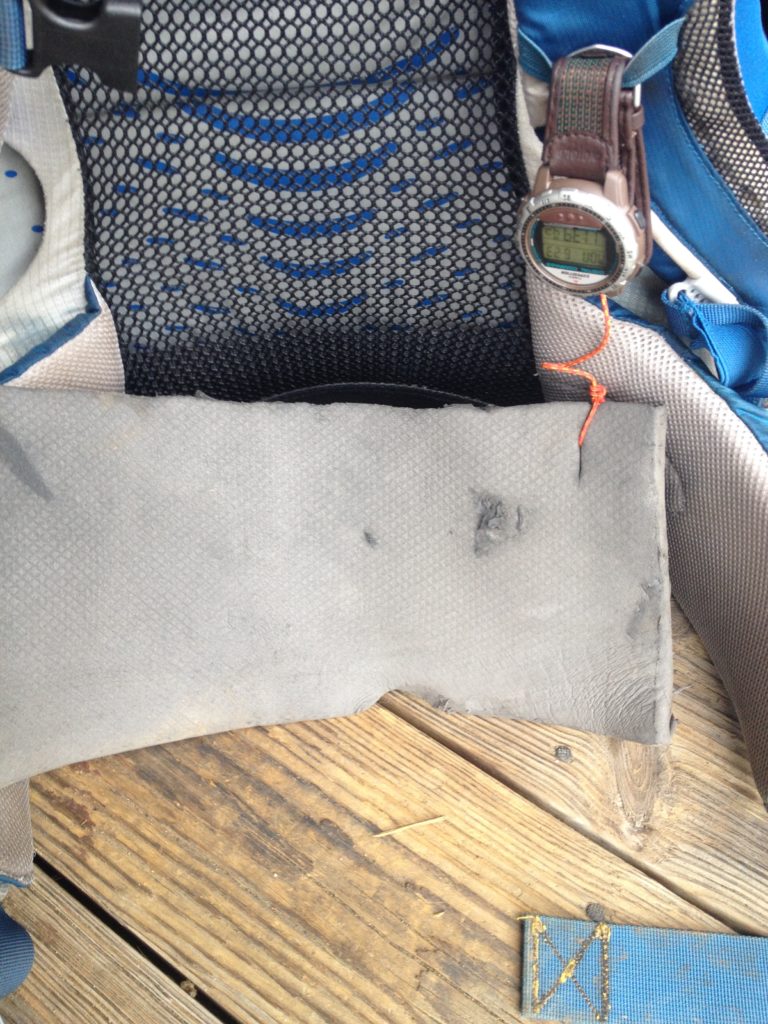
To combat this pain, I had to cut my sleeping pad and use it as padding to stop the backpack from hurting my back ‘as much.’ As you can see about two inches from the top and the right is a noticeable wear mark where my irritated iliac crest was rubbing.
I emailed Osprey, told them about my issues and with no more questions asked, they bent over backwards to insure my thru-hike was successful. They overnighted me an Aether 70L backpack, which is more of a mountaineering style and has more padding and can carry the heavier weight. They also sent along a plethora of extra male and female clips in different sizes and two different hip belts to try out (which was key because my torso length is a medium but I now have a small hip belt). They only requested that I pack up my smelly and terribly disgusting Atmos pack and ship it back to them. So for $14 in shipping, Osprey preserved my thru-hike (and me physically) and forever gained my loyalty and utmost confidence in their company, products and service.
Osprey has a very wide range of backpacks and many of them are excel in head to head comparisons. Outdoor Gear Lab included six Osprey backpacks in their Best Backpacking Backpack Review; you can read and explore that very help review article here. After Outdoor Gear Lab’s extensive reviews and head to head comparison, both the Osprey Atmos 65 AG and the Osprey Xenith 75 were Top Picks; with Osprey Volt 75 was their Best Buy priced at $200. Depending on your budget, carrying weight expectations and length of hikes, any of these three packs would be great, long-term packs. The female version of the Atmos backpack, the Osprey Aura, is a top choice for any female hikers out there. Another great female backpack from Osprey is the Ariel series, the female version of the Aether.
All of the above mentioned backpacks and other Osprey packs can be picked up from retailers such as REI and also online merchants like Backcountry and Amazon:
A lighter backpack, good with loads under 45lbs. and well ventilated. Also includes an anti-gravity suspension system. I hiked with this backpack (2014 edition) for roughly 800 miles on the Appalachian Trail and the only reason why I had to switch to the Aether was because I was carrying too much weight for the suspension backing and it was collapsing against my back. The backpack worked great and I really had no other issues besides the ‘overweighting issue’. If I ever end up going with lightweight gear, I would seriously contemplate the Atmos again.
Osprey Aura 50 AG – Female backpack
This backpack has all the same benefits of the Atmos pack but in a smaller and more female tailored design and fit. This backpack won the top honors from Outdoor Gear Lab’s review. According to Outdoor Gear Lab’s own words “it is the best women’s backpacking pack we have used, outshining the others in trip length versatility, light weight without compromising support, and a simple, feminine design with women’s specific shaping in the shoulder straps, hip belt, and overall fit.” I couldn’t have said it any better myself.
One of Osprey’s more budget-minded packs, good design, wide range of fit, not as comfortable with loads in excess of 50lbs.
More expensive but more comfortable and can carry heavier loads. If I feel the need to “upgrade” from my Aether (which I am completely happy with), it would be to the Xenith. I believe being able to carry ‘more’ at all times is helpful. I can always remove stuff from my backpack or simply carry less and have more space in my larger capacity backpack. If you go with a smaller capacity backpack, you will always be limited to that capacity regardless of the conditions or situation.
My current pack, a very solid bag, comfortable, less expensive than the Xenith series but can still carry weight well. I have maybe 1,500 hard hiking miles on this pack and it still works great, smells some and squeaks a little but is a workhorse. Has interchangeable shoulder harness and hip belts which allow for better tailored fit than backpacks like the Atmos which does not offer that same ability.

My Osprey Aether 70. Have a bunch of patches sewn on it and as always, I carry my daisy chain’ed paracord no mater what because you just never know…
Osprey Ariel 55 – Female backpack
The female version of the Aether backpack, the Ariel does a great job at carrying and supporting weight very well. My girlfriend currently uses an Ariel 50 and loves it. The Ariel packs are not as light or ventilated as the Aura series but the just as with the Aether, the interchangeable Isoform harness and moldable Isoform hip belt are a key feature in my eyes.
After Osprey, in regard to comfort and ability, I would recommend Gregory backpacks. My one very good friend and avid hiker, owns a Gregory Baltoro backpack and never plans to buy another one.
According to him the backpack it is the most comfortable pack he has ever owned, his prior packs were REI ones; perfect for heavier loads and longer trips. The pack has very high quality and supportive foam padding (which may need to be worked in at first) and has far superior lumbar support than almost all over bags out there. When carrying heavier loads, the suspension system on the Baltoro, really comes into its own. Both the shoulder straps and the hip belt actually pivot into the more effective position, only adding to the comfort and support of the Baltoro. My friend never complains about the typical pressure points or aches when we get to camp. A neat feature of this bag is that the top lid has dual zippered pockets that are more upright oriented than the traditional half clam zipper. This allows you to easily organize and then find and access essential gear.
Outdoor Gear Lab Gregory Baltoro 65 Review
Amazon – Gregory Baltoro 75 Backpack
Amazon – Gregory Baltoro 85 Backpack
Outdoor Gear Lab’s top pick in their backpack review is the Arc’teryx Altra 65. I have never had any experience with those backpacks, nor met anyone else who has, so I don’t feel able to comment on them. I recommend reading Outdoor Gear Lab’s review and then try speaking with anyone you may know who has some experience with an Arc’teryx backpack.
Regardless of which pack you are thinking about, I definitely recommend to read up as much as you can online, go try out a backpack at a certified dealer if possible and speak to fellow hikers to get their opinions.
I hope this article helps lay out some of the basic hiking backpack types out there, some of the pros and cons to each and also some recommendations in each of the backpack categories. If you have any questions feel free to reach out in the comments.
Happy Trails!
-Six Slash


